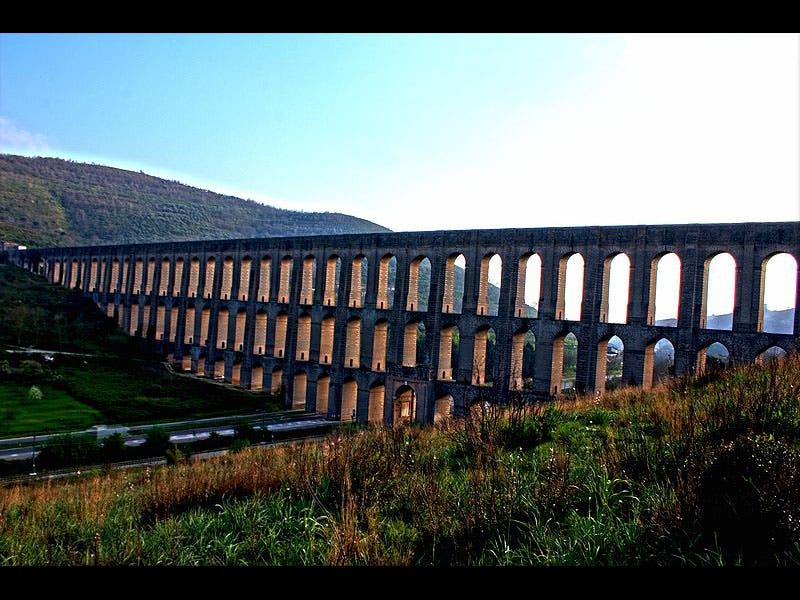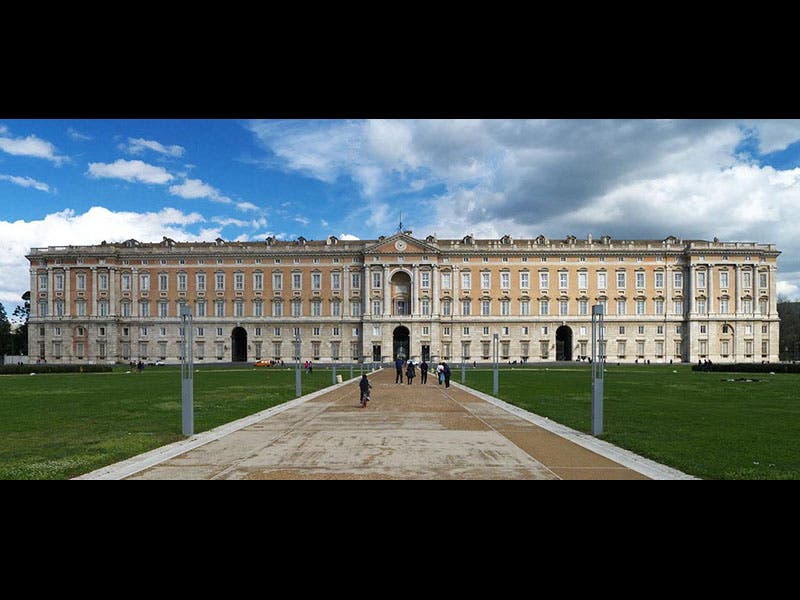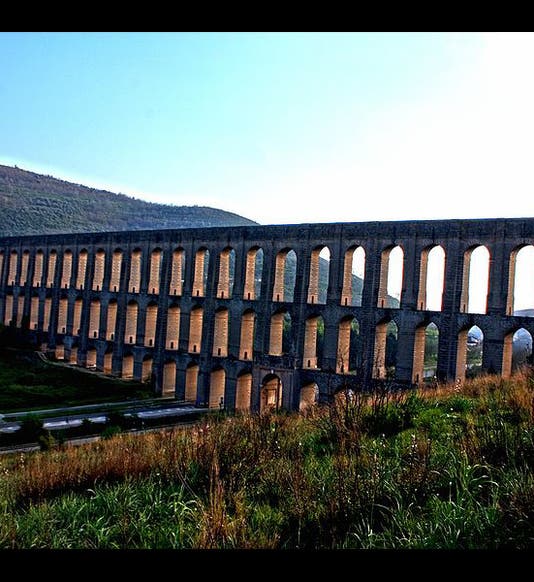Scientist of the Day - Luigi Vanvitelli




Luigi Vanvitelli, an Italian architect and engineer, was born May 12, 1700. In 1751, the young King of Naples, Charles of Bourbon, decided that he wanted a royal palace to rival that of Versailles, and he hired Vanvitelli to build him his Xanadu. Vanvitelli was successful beyond Charles’ expectations, and the Reggia di Caserta (Palace of Caserta), just northeast of Naples, was one of the architectural wonders of the age. We see above the palace (second image) and one of the fountains, with the palace in the distance (third image).
But this is a science and technology blog, so we turn to a Vanvitelli engineering feat that was part of the Caserta project. The palace and its proposed gardens and fountains needed water, lots of it, so Vanvitelli designed a supply system to bring water from a mountain spring some 23 miles away. Much of it travels underground, but to cross the Maddaloni Valley, Vanvitelli designed and built an aqueduct that emulated the style of ancient Roman aqueducts. The surviving section is 1700 feet long and rises 180 feet above the valley floor (first image). It is properly called the Caroline aqueduct, after Charles, the man who paid the bills, but it is usually referred to as the Vanvitelli aqueduct, after the man who built it. The Vanvitelli aqueduct is not quite as magnificent as the Pond de Gard, but one has to admit, it is in much better shape. The Caserta Palace and the Vanvitelli aqueduct (which is about 7 miles from the palace) were declared a World Heritage Site in 1997; there is additional information on the WHS webpage.
The aqueduct was not finished until 1762, and the palace took decades to build. Charles never spent a night in his palace, or drank a drop from his aqueduct, as in 1759 he succeeded to the throne in Spain (as Charles III) and had to abdicate as King of Naples (and Sicily), turning over the Italian Kingdoms to his son Ferdinand, who got to enjoy the benefits of Vanvitelli’s genius and labors. Presumably it was Ferdinand who was responsible for erecting a statue at Caserta in honor of the architect (fourth image).
Dr. William B. Ashworth, Jr., Consultant for the History of Science, Linda Hall Library and Associate Professor, Department of History, University of Missouri-Kansas City






